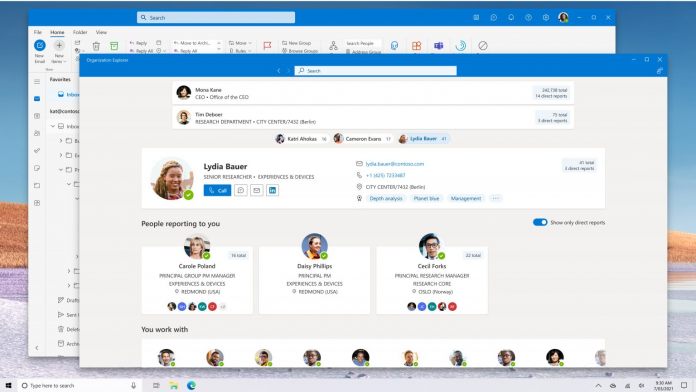While the launch date remains unknown and Microsoft has yet to go official on Project Monarch Outlook, the company may have leaked an image of the client. The shot was included – either on purpose or accident – on a rundown of the latest Office Insider Preview. It is worth noting Microsoft is not discussing Project Monarch in the article, so still no official word on the “One Outlook” experience. Still, the image shows an email client with rounder corners and icons, a sparser taskbar, and a more professional overall design. In fact, it looks a lot like what Microsoft is said to be planning for its Windows 10 design update later this year. We already know Windows 10 Sun Valley (21H2) will overhaul the look of the platform. With its Fluent Design concept of a unified design language, it stands to reason Outlook Project Monarch and the new Windows 10 look similar.
Project Monarch
Monarch takes its cues from the existing Outlook for Web. It brings many of that service’s dynamics to app form as a desktop client. When we talk about a unified email experience through Outlook, it will gather the various versions of the services from across platforms into a single app. For example, it will replace the Win32 and UWP apps on Windows 10, Outlook Web Access, and the macOS version. It will also be hosted as Outlook for Web on browsers. Perhaps the most important question about One Outlook is when the app will arrive? While a release on Sun Valley would be nice, it remains unlikely. Certainly, Project Monarch is not yet at the preview stage. That means a 2022 launch still seems the most likely. Tip of the day: When Windows 10 runs into serious problems, it’s not rare to run into startup problems. Corrupted Windows files, incorrect system configuration, driver failure, or registry tweaks can all cause this issue. Using Windows 10 startup repair can fix boot issues caused by the most prevalent issues. Though it may seem that all is lost when you run into startup problems, it’s important to try a Windows 10 boot repair so you can at least narrow down the source of the issue. If it doesn’t work, you may have to reinstall the OS or test your hardware.




